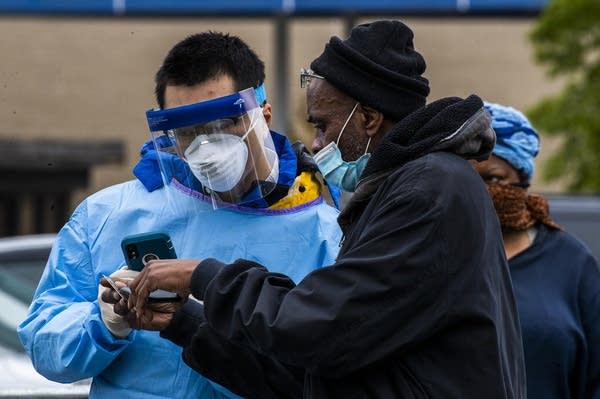July 31 update on COVID-19 in MN: Hospitalizations up; worry circles the rodeo

A Medical Reserve Corps volunteer checks a patient to be tested for Covid-19 at United Medical Center in Washington, D.C.
Manuel Balce Ceneta | AP
Go Deeper.
Create an account or log in to save stories.
Like this?
Thanks for liking this story! We have added it to a list of your favorite stories.


